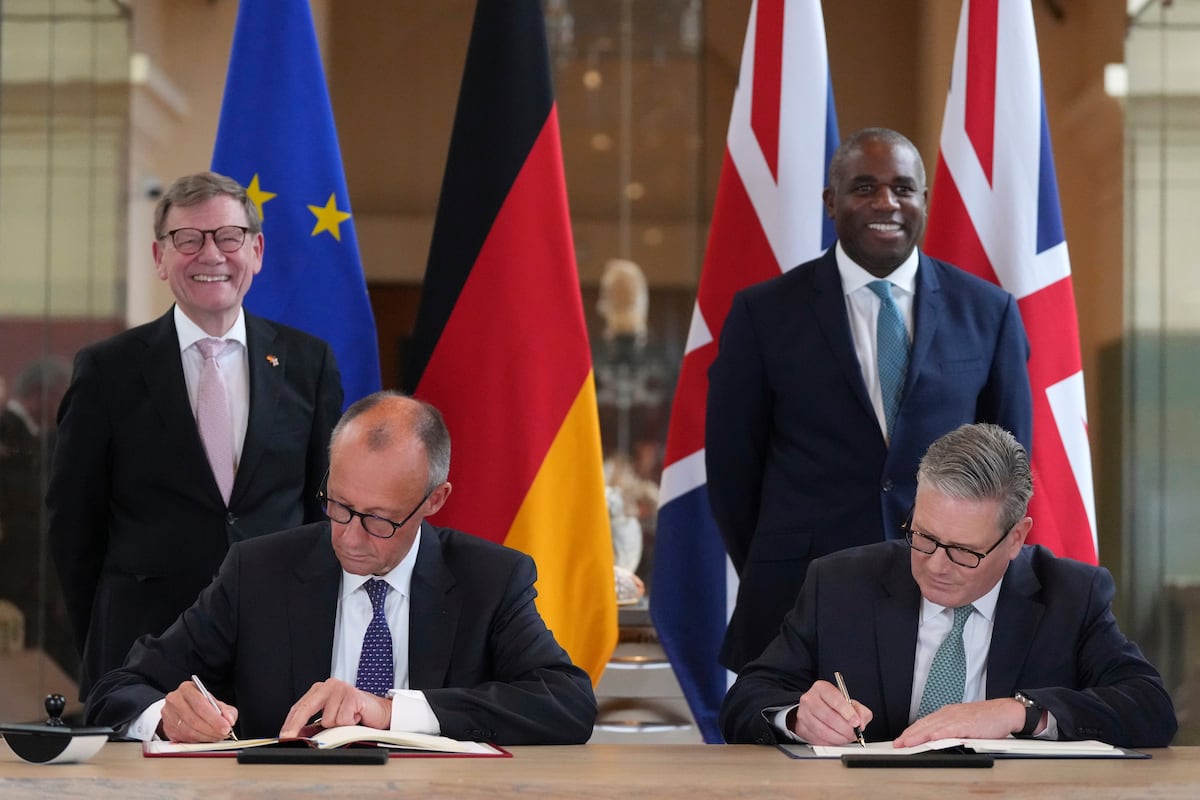



THE HAGUE, Netherlands — Germany and the United Kingdom have signed their first bilateral defense pact since World War II, promising to come to each other’s aid in the case either is attacked and deepening defense integration.
On the sidelines of the signing, the leaders also teased a new phase in the provision of long-range weapons to Ukraine. Shortly thereafter, Russia’s foreign ministry renewed warnings that such a move may be met with military strikes against European countries.
The new bilateral agreement, referred to as the “Kensington Treaty,” was signed on Thursday in London. It includes a broad range of promises, ranging from joint military-industrial exports to facilitating school exchanges between the two countries. It additionally commits the NATO allies to “assist one another, including through military means, in the event of an armed attack on the other.”
Germany’s Chancellor Friedrich Merz called it a “pivotal day for the relations between Germany and Britain.”
He also said that he had spoken with British Prime Minister Keir Starmer about Ukraine’s need for long-range weapons systems.
“Ukraine will soon receive substantial additional support in this area,” Merz told the press.
Both leaders emphasized their continued support for Ukraine in light of Russia’s war against the country.
Just hours later, Russian Foreign Ministry spokeswoman Maria Zakharova repeated earlier warnings that Russia may see itself forced to strike targets in Western Europe if Kyiv receives long-range weapons.
“In the event of further escalation, we will respond decisively and in a tit-for-tat manner,” Tass, a Russian news agency, quoted her as saying with a nod to supposed German plans for providing Kyiv with the Taurus long-range cruise missile. “Russia considers itself entitled to use its weapons against the military facilities of countries that permit the use of their weapons against us.”
The new agreement, formally known as the Treaty of Friendship and Bilateral Cooperation, encompasses 17 projects that the U.K. and Germany will jointly undertake. Among them is the joint development of a deep precision strike weapon capable of hitting targets at ranges of greater than 2,000 kilometers, to be completed within the next decade.
“It will be among the most advanced systems ever designed,” the German government touted in a document.
Berlin and London will also cooperate to address submarine threats in the Northern Seas, to develop vehicles and doctrine for uncrewed aerial systems and to strengthen NATO’s eastern flank.
“The UK and Germany commit to building a much deeper Defense partnership which will endure in the long term,” the German government wrote.
The countries will also pursue joint export initiatives of military products designed to boost international sales of collaboratively produced military equipment, such as the Eurofighter Typhoon jets and Boxer armored vehicles. Germany’s strict rules for arms exports had previously served as a roadblock for some proposed exports, such as the sale of the Eurofighter to Saudi Arabia.
The treaty continues a trend of rapid European defense integration kick-started by Russia’s full-scale invasion of Ukraine in 2022 and turbocharged by President Donald Trump’s return to the White House in Washington. It strengthens the key role of the E3 — Germany, U.K. and France — in Europe’s defense. The U.K. signed a separate, sweeping treaty with France last week, which included the groundwork for a potential European nuclear umbrella.
Linus Höller is Defense News' Europe correspondent and OSINT investigator. He reports on the arms deals, sanctions, and geopolitics shaping Europe and the world. He holds a master’s degrees in WMD nonproliferation, terrorism studies, and international relations, and works in four languages: English, German, Russian, and Spanish.
